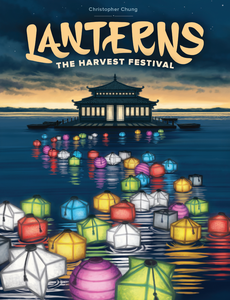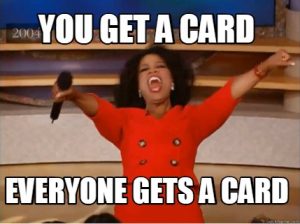
Title: Lanterns The Harvest Festival
Players: 2-4
Play Time: 30′
Designer: Christopher Chung
Publisher: Foxtrot / Renegade Game Studios
Overview
This is one of many games I purchased after watching in played on TableTop on YouTube. It supports 2-4 players, the rules can be explained in less than five minutes, and it plays in less than 30. As such it fits nicely into a time slot where you are still waiting for part of your gaming group to arrive or you want something lighter so you can have a conversation while you’re playing. (Tsuro also falls into this “quick play” category for me.)
Lanterns is one of many games coming to us via the Kickstarter process. I love the fact that independent game designers can get their products in front of the marketplace via this route! Not every game gets funded, and of those that do, not every game is a success. This one, however, I like.
It was recognized as a Mensa Select game for 2015.
Components
The components are excellent for a game of this complexity / price point. The lantern cards come with a more expensive linen finish, which makes them feel more durable while at the same time giving them a more elegant look and feel. The cards are not manipulated a lot, so they should not wear much.
The cardboard used for the lake tiles are a nice size (both in thickness and it their playing dimensions).
The favor tokens are wood rather than plastic or cardboard which is a nice touch. The Chinese character on the favor tokens represents the game designer’s last name which is very cool. 😎
Game Play / Rules
Each player is trying to build a display of floating lanterns for a Chinese festival of lights. Players start with a hand of three lake tiles and draw a replacement after each play. Cards have four quadrants, each with a (potentially) different color of lantern. If you match a lantern color to a card already in play you get a bonus. As each tile is placed, the active player acquires a card matching the color of lantern facing their position. As a bonus, if they match an edge of their tile to an existing tile they get a bonus lantern of that color. Each other player, going in clockwise order from the active player, will also receive a card for the color that is facing their position. If the supply of a particular color of lantern is out, then the player gets skipped.
The goal is to turn in combinations of cards for points. Possibly combinations include four of a kind, three pair, or seven unique (one of each color). The first combination that fits a particular pattern will earn the most points, so there is some strategy involved in trying to figure out what patterns other players are trying to complete and adjust your moves accordingly. The first person to turn in seven unique lanterns earns 10 points. The second to do the same earns 9 and it goes down (not linearly) from there.
Complexity
Lanterns gets a complexity rating of 1.57 out of 5.0 at Board Game Geek, and I agree with that assessment. It’s very easy to explain, and since everyone is (most likely to be) involved on every turn, the rules and strategies are learned quickly.
Experience
I like the game experience quite a bit. During the initial rounds, everyone is active on every turn. As each player places a lantern tile, they are rewarded with a card that matches the color of lantern facing their position. Each other player at the table is also going to pick up a card based on the color of lantern facing their position as well! Later in the game if people are hoarding lantern cards it may be that one of the draw piles is empty, but at least for the early stages of the game everyone gets a card on every play.

For the games we’ve played we’ve seen that there seems to be a “first player advantage” but I have not confirmed this with any sort of math. In fact I almost would have expected a “last player advantage” because by the time it’s their turn they already have several lantern cards from other players.
Overall Score
I rated it 8/10 on Board Game Geek. The quality of the components, the simplicity of the rules, the inclusion of all players on every turn in the early stages…all add up to an enjoyable experience for me.
Related Links